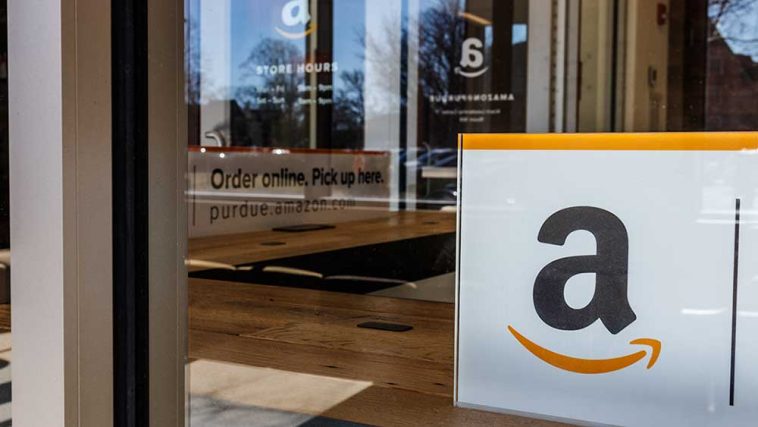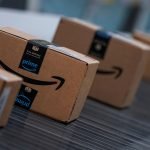Introduction.
Working from home while running a business on Amazon FBA (Fulfillment by Amazon) has become an attractive option for people looking to break away from traditional office settings.
With flexible hours, a low-cost startup model, and the potential for passive income, Amazon FBA offers a great path to financial independence without leaving the comfort of home. But it’s not all sunshine and rainbows—there are challenges too.
In this guide, I’ll walk you through everything you need to know about getting started with Amazon FBA, balancing its advantages and drawbacks, and giving you the tools you need to make an informed decision.
Amazon FBA has given thousands of entrepreneurs a way to reach millions of customers without the headache of storing and shipping products. However, like any business, it requires planning, patience, and a bit of hustle.
From finding profitable products to managing costs and handling competition, there’s a lot that goes into a successful Amazon FBA business.
If you’re wondering if this could be the right work-from-home option for you, read on to discover what it takes to get started and succeed in this fast-growing marketplace.
What Is Amazon FBA?
Amazon FBA is a service that allows sellers to use Amazon’s massive network to store, package, and ship their products.
When you sign up, you send your products to Amazon’s warehouses, and when customers place an order, Amazon takes care of the fulfillment.
This means that Amazon handles storage, customer service, returns, and shipping, allowing you to focus on other parts of your business, like product sourcing and marketing.
With the growing popularity of online shopping, the demand for sellers on Amazon has surged. In fact, over 50% of Amazon’s sales come from third-party sellers.
The FBA program is perfect for anyone who wants to leverage Amazon’s logistics and reach without the hassles of managing their own warehouse or delivery service.
How Do I Work From Home Selling On Amazon FBA?
Starting an Amazon FBA business can be broken down into several steps. Each step requires thoughtful planning, as skipping any of them can lead to mistakes that could cost you time and money.
1. Research Products.
This is perhaps the most important part of any Amazon FBA business. Successful sellers often look for products that are high in demand but have limited competition. Tools like Jungle Scout or Helium 10 can help you analyze market trends and find profitable products.
2. Source Your Products.
After deciding what to sell, you’ll need to source your products. Many FBA sellers turn to suppliers on platforms like Alibaba, but you could also look at domestic options depending on your needs and budget.
3. Create an Amazon Seller Account.
You’ll need a Professional Seller account to use Amazon FBA, which costs around $39.99 per month. This allows you to list as many products as you like and access advanced selling tools.
4. Send Products to Amazon.
After setting up your account and listing your products, send your inventory to Amazon’s fulfillment centers. Amazon will handle all customer orders from here, taking care of everything from packaging to shipping and returns.
5. Promote Your Listings.
To stand out on Amazon, you’ll need optimized listings with high-quality images and compelling descriptions. It’s also a good idea to invest in Amazon PPC (pay-per-click) ads to drive traffic to your listings.
6. Analyze and Optimize.
Track your sales, check customer reviews, and adjust pricing or product listings as needed to improve your performance over time.
Pros and Cons of Selling on Amazon FBA from Home
Like any business model, Amazon FBA has its pros and cons. Here’s a look at some of the key advantages and drawbacks.
Pros
- Easy to Scale: Once you have a successful product, you can easily increase your inventory and sales volume without additional logistics hassles.
- Low Maintenance: Amazon handles packing, shipping, and customer service, which means less time spent on operational tasks.
- Access to Millions of Customers: With millions of people shopping on Amazon, you gain access to a massive market without having to drive traffic to your own website.
- Fast Delivery: Amazon’s Prime service means faster shipping times, which can help boost sales and customer satisfaction.
Cons
- Amazon Fees: While FBA frees you from warehousing and shipping, Amazon charges various fees, including referral and fulfillment fees, that can eat into your profit.
- Competition: Amazon is a crowded marketplace, and standing out requires strategic planning and investment.
- Inventory Risks: If your products don’t sell as expected, you’re still responsible for storage fees, and Amazon may even remove your inventory if it sits unsold for too long.
- Limited Control: Since Amazon handles the customer experience, you have less control over branding, returns, and customer interactions.
FAQs
1. How much money do I need to start an Amazon FBA business?
Starting an Amazon FBA business can cost anywhere from $1,000 to $5,000. This includes inventory costs, software tools, and initial advertising. Some sellers have started with less, but having a few thousand dollars helps cover upfront expenses comfortably.
2. Can I work on my Amazon FBA business part-time?
Yes, many people start their Amazon FBA businesses while working a full-time job. Since Amazon handles the logistics, you can run this business with flexible hours, focusing mainly on product sourcing, listing optimization, and marketing.
3. How quickly can I start making money with Amazon FBA?
It depends on your product’s market demand, competition, and the effort you put into optimizing your listings. Some sellers see profits within a few months, while others may need longer to break even.
4. What are some common mistakes beginners make?
One common mistake is choosing overly competitive products, which makes it harder to achieve visibility and sales. Others include underestimating Amazon’s fees, neglecting listing optimization, and not allocating enough budget for advertising.
5. How can I find profitable products to sell?
Tools like Jungle Scout, Helium 10, and Viral Launch are designed to help you analyze product demand, competition, and profitability. These tools make it easier to identify products with strong sales potential before you invest.
6. Do I need to create my own brand to succeed on Amazon FBA?
While many sellers succeed with private label brands, it’s not the only route. Some sellers find success with wholesale or retail arbitrage models, buying from established brands and reselling on Amazon.
Conclusion
Running an Amazon FBA business from home is an exciting way to make money and take control of your time.
With Amazon’s reach and infrastructure, you can build a profitable business with fewer logistical worries than traditional e-commerce.
But success in FBA isn’t guaranteed; it takes careful planning, market research, and consistent effort to thrive.
Are you ready to give Amazon FBA a shot and see if it’s the right work-from-home business for you?





GIPHY App Key not set. Please check settings